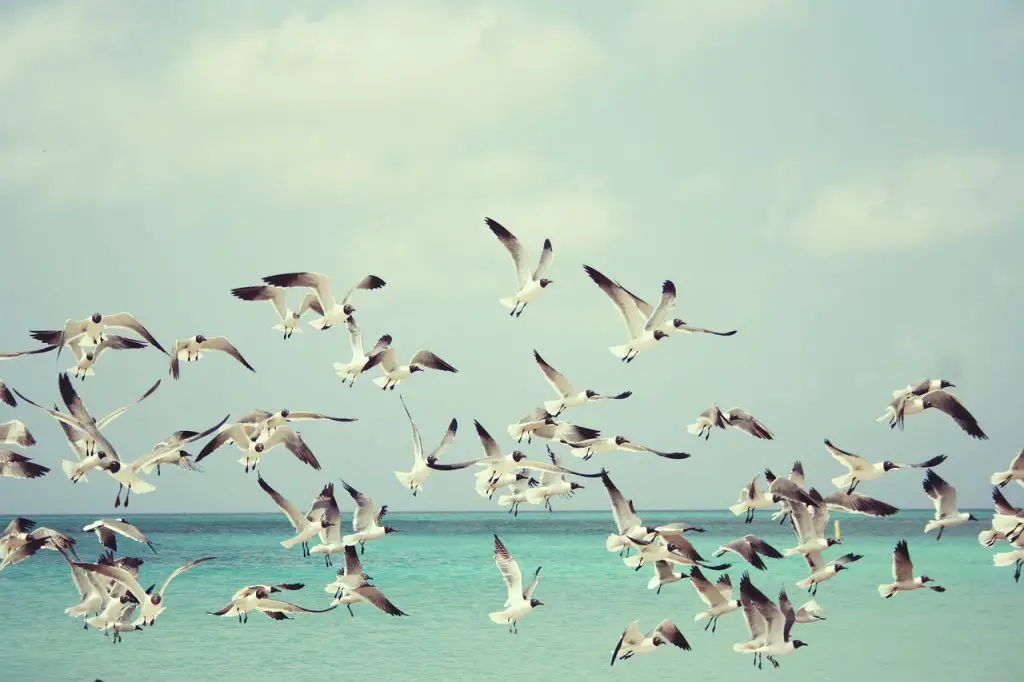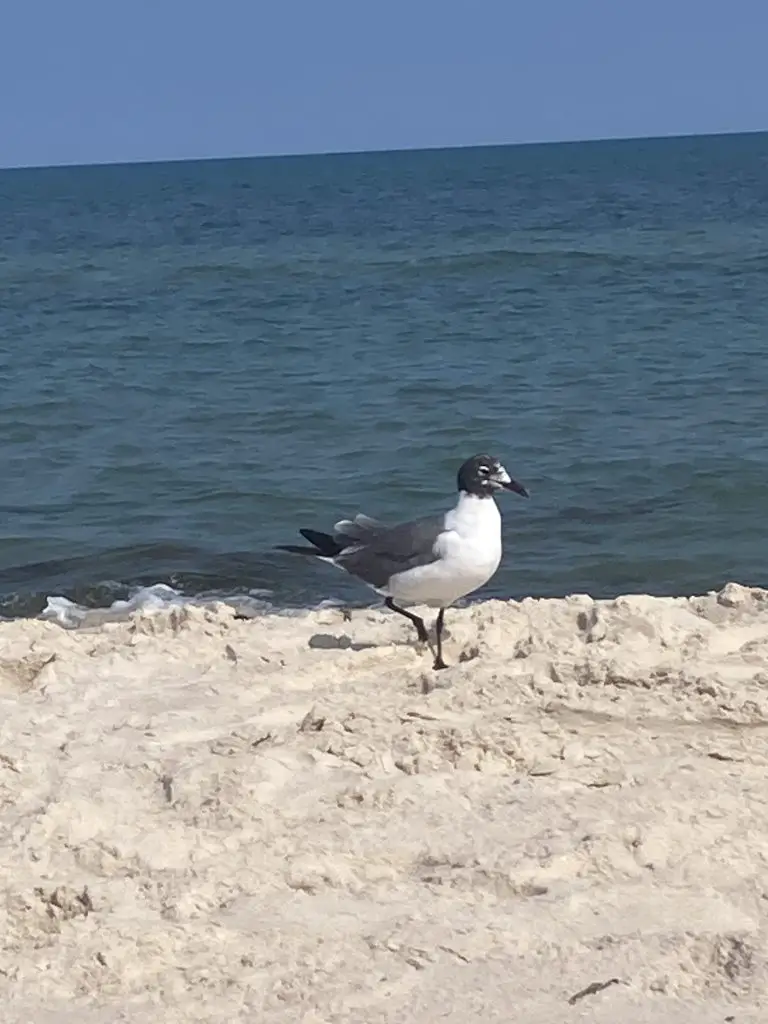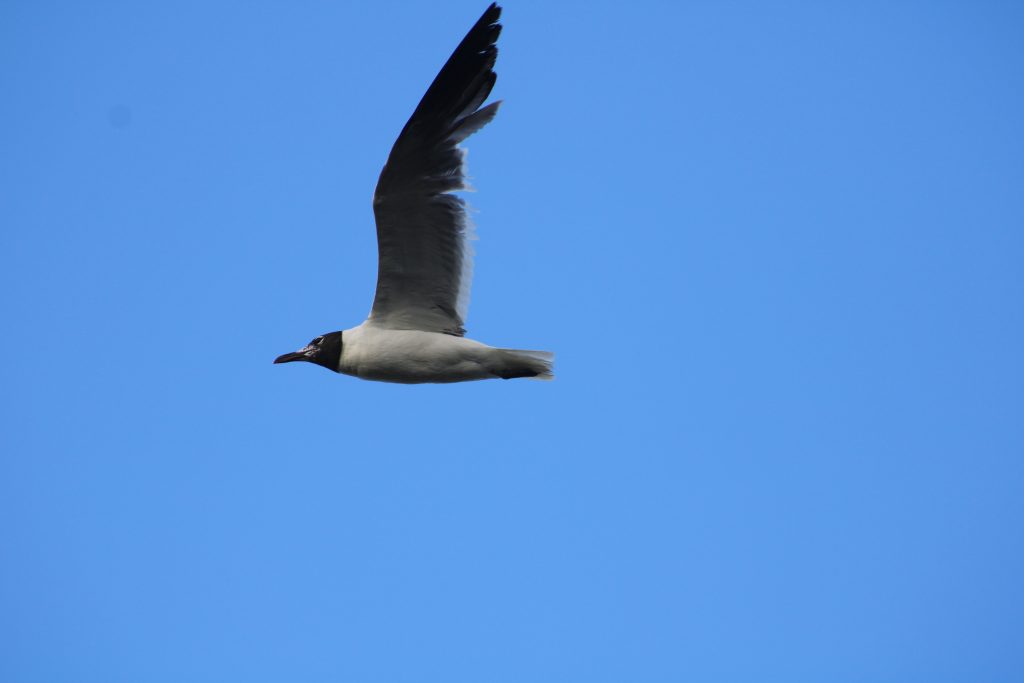When you see a group of seagulls, it can be a beautiful sight.
Unless you have a tasty treat! With a snack in hand, a group of seagulls tends to be more of a nuisance than anything else.
But what can you call a group of gulls? While there are many different nouns available, some of the most common include a flock, colony, and squabble. We will explore other terms to describe a group of gulls. Plus, give you some insight into the behavior of seagulls.
Key Facts:
- A few commonly used collective nouns for a group of seagulls include flock, colony, and squabble.
- When you see a group of seagulls, you have multiple words available to describe them.
Terms for a Group of Seagulls
Seagulls, which include gulls from the scientific family of Laridae, live all over the world. With over 50 species of gulls living on every continent, it’s not surprising that there is more than one term for a group of seagulls. Here’s a look at the terms used for a group of seagulls:
- A flock of seagulls
- A squabble of seagulls
- A colony of seagulls
- A swoop of seagulls
- A screech of seagulls
- A flotilla of seagulls
- A pack of seagulls
My favorite term for a group of seagulls is a squabbly of seagulls. If you’ve spent any amount of time around a large group of seagulls, you can likely understand. Seagulls tend to loudly communicate amongst themselves. With lots of squabbling over food and more, the term squabble seems apt for these birds.
Seagulls: Geographic Distribution

Seagulls are highly adaptable and widely distributed birds found across the globe. These versatile avian creatures have managed to establish their presence in diverse geographic regions, showcasing their remarkable adaptability to various habitats and ecosystems.
In coastal areas, such as the shores of oceans, seas, and large lakes, seagulls are a common sight. These regions provide an abundant source of food, primarily consisting of fish, mollusks, and crustaceans. The open expanses of water allow seagulls to take advantage of their excellent aerial skills, effortlessly gliding over the waves in search of their next meal.
Apart from coastal environments, seagulls have also successfully colonized urban and suburban landscapes. The availability of food scraps and waste in cities has provided an alternative food source for these opportunistic birds. As a result, bustling cityscapes near waterfronts or garbage dumps often become a habitat for these adaptable birds.
Furthermore, seagulls are known to thrive in colder regions as well. In the Northern Hemisphere, they can be found in places like the Arctic and sub-Arctic regions. During the breeding season, they create nesting colonies on rocky cliffs and offshore islands, where they are protected from terrestrial predators.
Conversely, in the Southern Hemisphere, seagulls inhabit areas like the southern coasts of South America, Africa, Australia, and New Zealand. These regions offer similar coastal and marine resources, making them ideal habitats for various seagull species.
Do Segulls Gather in Large Groups?
Seagulls, known for their social and gregarious nature, frequently gather in large groups. As an outsider looking in, you might be curious to know why the birds choose to spend so much time in close quarters. The main reasons include migrations, feeding, and safety. Below you’ll find more information on each of these reasons.
Feeding

The abundance of food in certain feeding areas attracts seagulls to congregate in sizable groups. Coastal environments, in particular, offer a smorgasbord of opportunities, such as fish, mollusks, crustaceans, and even human-provided scraps. As word spreads among the gulls about an accessible and plentiful food source, more and more birds join the gathering, resulting in a bustling feeding frenzy.
Seagulls are highly competitive when it comes to food. Being opportunistic feeders, they capitalize on any available meal, and the sight of one gull pecking at a tasty morsel draws the attention of others. This leads to a cascade effect, with gulls vying to get their share of the feast, amplifying the group size as more birds rush in to claim their portion. (And lots of squabbling!)
In many cases, you’ll find gulls of different species spending time together feeding. Younger and less experienced gulls observe the actions of older, more adept individuals, picking up essential foraging skills and feeding techniques through observation and imitation. The group setting provides a valuable environment for knowledge transfer, strengthening the cohesion and cultural knowledge of the flock as a whole.
Migration
Seagulls are highly migratory birds known for their extensive travels. They tend to gather in large groups when migrating. One of the primary reasons for this behavior is the inherent advantage of collective navigation. Flying in a group allows seagulls to share the responsibility of charting the migration route, making it easier to identify and follow critical landmarks and favorable wind patterns. By working together, they optimize their flight efficiency and conserve energy during their long journeys, making the arduous migration process more manageable.
Another compelling reason for their large-group migration lies in the availability of food sources. As seagulls travel vast distances, they encounter various ecosystems with fluctuating food abundance. By migrating together, they can efficiently exploit temporary feeding opportunities that may not sustain an individual or a small group for long periods. This adaptability to changing food resources grants them a higher chance of survival and successful breeding during their migratory journey.
Safety

When it comes to survival in their coastal and marine habitats, there is strength in numbers. By forming sizable flocks, seagulls create a network of vigilant eyes that collectively scan their surroundings for potential threats. This heightened surveillance allows them to detect predators, such as raptors or other predatory birds, more effectively and promptly respond to potential dangers.
Additionally, the act of gathering in large groups serves as a powerful deterrent to would-be attackers. Predators are less likely to target a massive flock of seagulls, as the chaotic and frenetic movement of numerous birds can be intimidating and challenging to manage for even the most skilled hunters. The sheer numbers create a buffer, reducing the chances of an individual gull becoming the target of an attack, and increasing the chances of the flock as a whole to survive and thrive.
Groups of Seagulls: Social Behaviors
With so many different species and a seemingly constant presence at the beach, groups of gulls are pretty interesting birds. Let’s take a closer look at some of the interesting social behaviors these birds exhibit.
How Many Seagulls Compose a Flock?
The size of a seagull flock can vary significantly based on various factors, including the availability of food, the breeding season, and the region’s environmental conditions. Generally, a small flock of seagulls may consist of just a few individuals up to around twenty birds. These smaller groups often form when seagulls are engaged in activities like foraging for food or resting on a beach.
However, as seagulls are highly social birds, they frequently gather in larger flocks, especially during the non-breeding season or during migration. Medium-sized flocks can range from around twenty to several hundred individuals. These gatherings typically occur in coastal areas or near abundant food sources, where numerous gulls congregate to exploit the available resources efficiently.
Lifetime Pairs
The mating behavior of seagulls varies among different species. While some gull species do form long-term pair bonds, not all gulls mate for life. Among gulls that do exhibit monogamous behaviors, they often form pair bonds that can last for several breeding seasons or even throughout their entire reproductive lives.
For instance, the Herring Gull (Larus argentatus) is a well-known example of a gull species that tends to mate for life. Herring gulls typically form strong pair bonds during the breeding season and often return to the same nesting site year after year to raise their chicks together. This long-term commitment helps establish a stable family unit and provides the offspring with a greater chance of survival and successful reproduction in the future.
On the other hand, other gull species may not show the same level of fidelity and are more prone to changing partners between breeding seasons. Some species, like the Black-headed Gull (Chroicocephalus ridibundus), may engage in serial monogamy, where they form new pair bonds each breeding season, but the pairs disband after the chicks fledge.
When Do Seagulls Flock Together?
Seagulls tend to flock together throughout the year. Different reasons pull the birds together at different times of the year.
One of the most notable times when seagulls flock together is during the breeding season, which typically occurs in the spring and early summer months. As the breeding season approaches, seagulls start forming large colonies on coastal cliffs, offshore islands, or secluded beaches, where they build their nests and raise their chicks. The presence of numerous nesting pairs in close proximity creates impressive breeding colonies, where thousands of seagulls can be seen flocking together, engaged in courtship displays and defending their nesting territories.
During the non-breeding season, which generally encompasses the fall and winter months, seagulls also exhibit flocking behavior, although the dynamics are slightly different. Instead of forming massive breeding colonies, they tend to gather in more loosely structured flocks. These flocks often congregate near rich food sources, such as estuaries, coastal wetlands, and garbage dumps, where they can find an abundant supply of fish, crustaceans, and human-provided food scraps. These seasonal gatherings serve as essential opportunities for seagulls to replenish their energy reserves before embarking on their long-distance migrations to warmer or more abundant regions.
Migration periods are yet another crucial time when seagulls flock together. As the weather turns colder in the northern regions, many seagull species undertake impressive journeys to escape harsh winters in search of more favorable climates and food resources. During these migrations, seagulls join forces to form large, cohesive flocks that traverse thousands of kilometers across land and water. The spectacle of these migratory flocks is awe-inspiring, as they navigate their way with precision, relying on collective knowledge and the strength of numbers to ensure their successful journeys.
Groups of Seagulls: Frequently Asked Questions
You have questions about groups of seagulls. I have answers.
What is a group of seagulls called?
You can call a group of seagulls several terms. A few include a flock, a squabble, a colony, and a swoop.
What does a large flock of seagulls mean?
Seagulls gather for many different reasons. A few include feeding, breeding, migrating, and the safety that numbers can provide.
Final Take on Groups of Seagulls
A group of seagulls can go by many names. The next time you spot a group of these amazing birds, pull out your impressive selection of words.